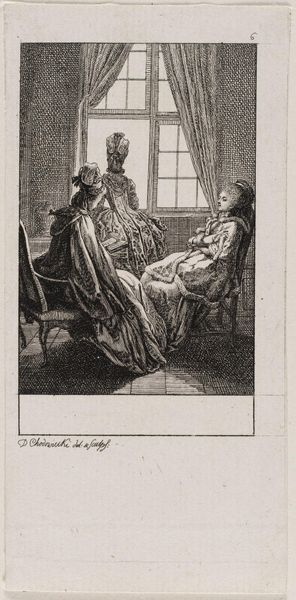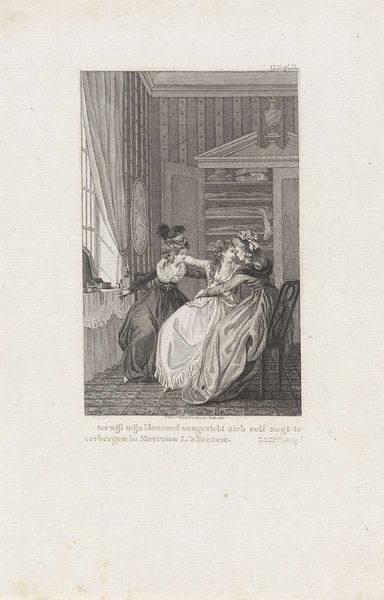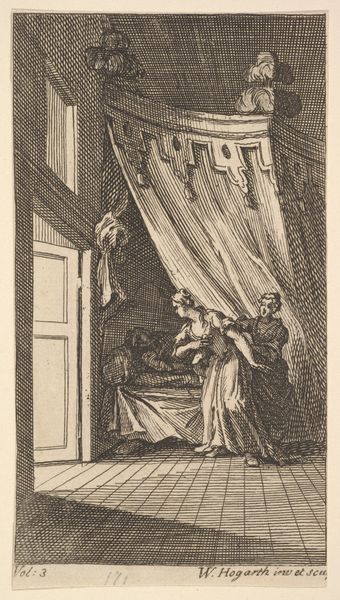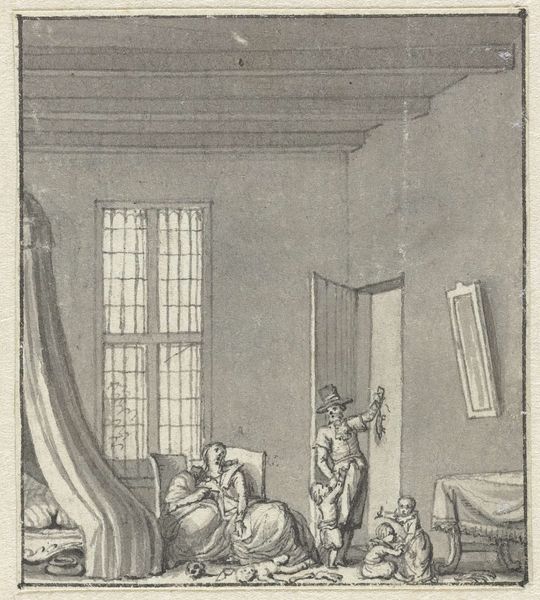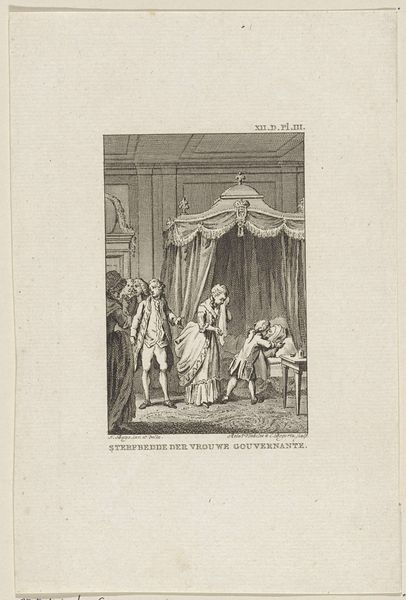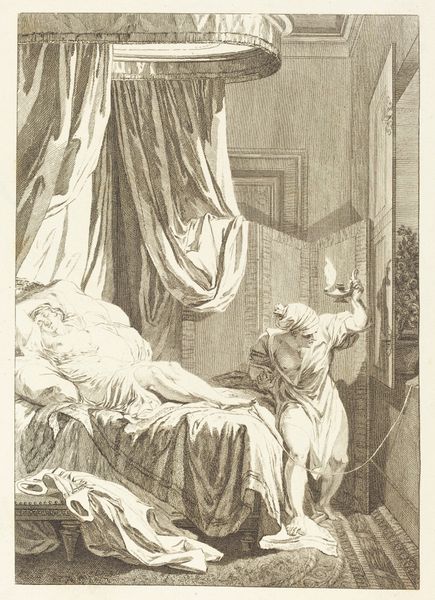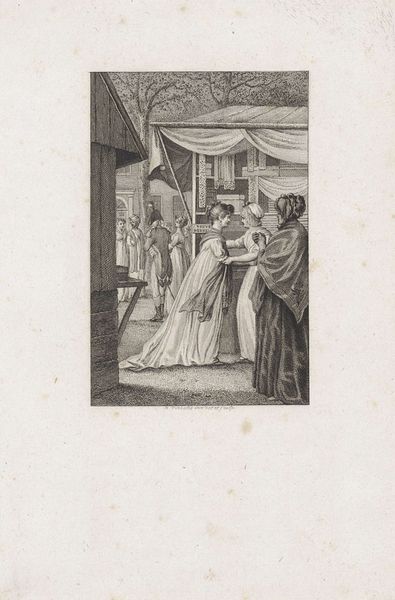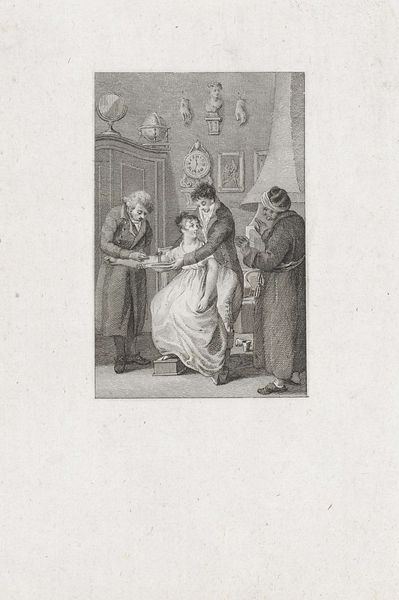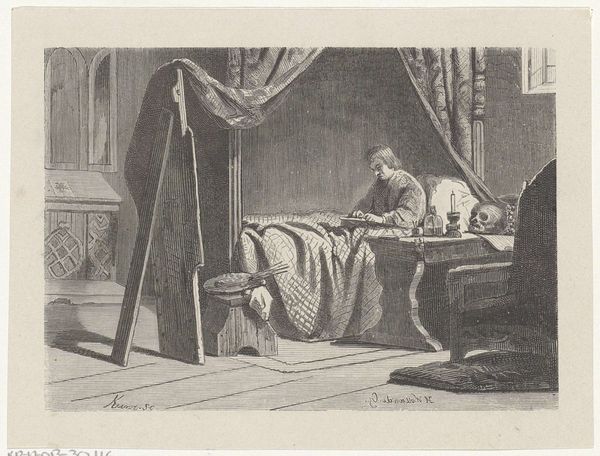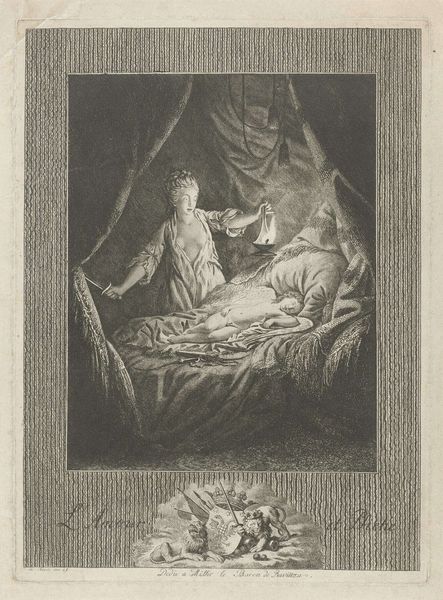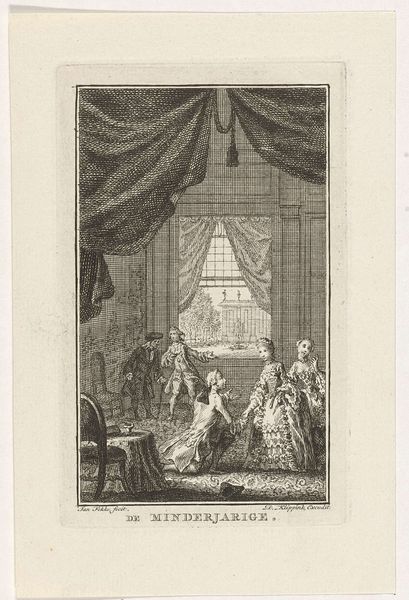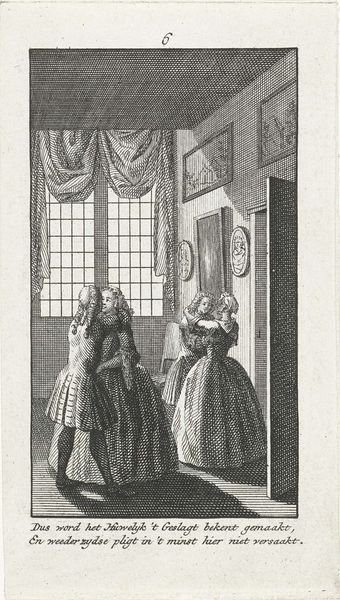
Dimensions: height 157 mm, width 95 mm
Copyright: Rijks Museum: Open Domain
Curator: Standing before us is a captivating engraving entitled "Roodkapje en de wolf," dating back to 1754-1784 and attributed to Simon Fokke. It's part of the Rijksmuseum's collection. Editor: It strikes me as unsettling, primarily through the rigid linearity of the lines and composition. The perspective feels intentionally distorted, adding to the feeling of unease, the very tight crosshatching adds tension. Curator: Indeed. Simon Fokke situates the scene within the popular narrative tradition. Consider how this engraving speaks to the socio-cultural fears of the time—vulnerability, deception, and the lurking dangers found even in familiar stories like Little Red Riding Hood. Notice the figures outside the house at left with weapons, referencing that violence is always present? Editor: Absolutely, there's an interesting juxtaposition between interior and exterior spaces. The tight confines of the house, accentuated by the cross-hatched ceiling, verses that outdoor world, barely controlled in the wild growth outside the window. All lines and shading seem to draw us to a place beyond safety. Also, consider the staging of Little Red Riding Hood—the crisp lines of her dress versus the slumped, ambiguous form in the bed? Is the figure actually dead, replaced, or just asleep? Curator: This work highlights the Baroque's penchant for drama and moral storytelling, with the subject revealing societal concerns about childhood innocence in the face of ever present danger. And we shouldn’t dismiss Fokke's role in disseminating this tale visually, reaching audiences far and wide. Editor: For me, it's the treatment of space that’s really grabbing. The flatness and exaggerated perspective lend an artificial, theatrical air. Fokke utilizes lines not merely to depict but to construct a very particular psychological tension between characters as symbols. Curator: It is certainly an evocative illustration of that moment when innocence is just about to meet danger—a timeless theme explored through a very particular historical and cultural lens. Editor: Yes, analyzing those tensions, that artificiality, grants us a glimpse into the narrative that goes well beyond the purely visual experience.
Comments
No comments
Be the first to comment and join the conversation on the ultimate creative platform.
